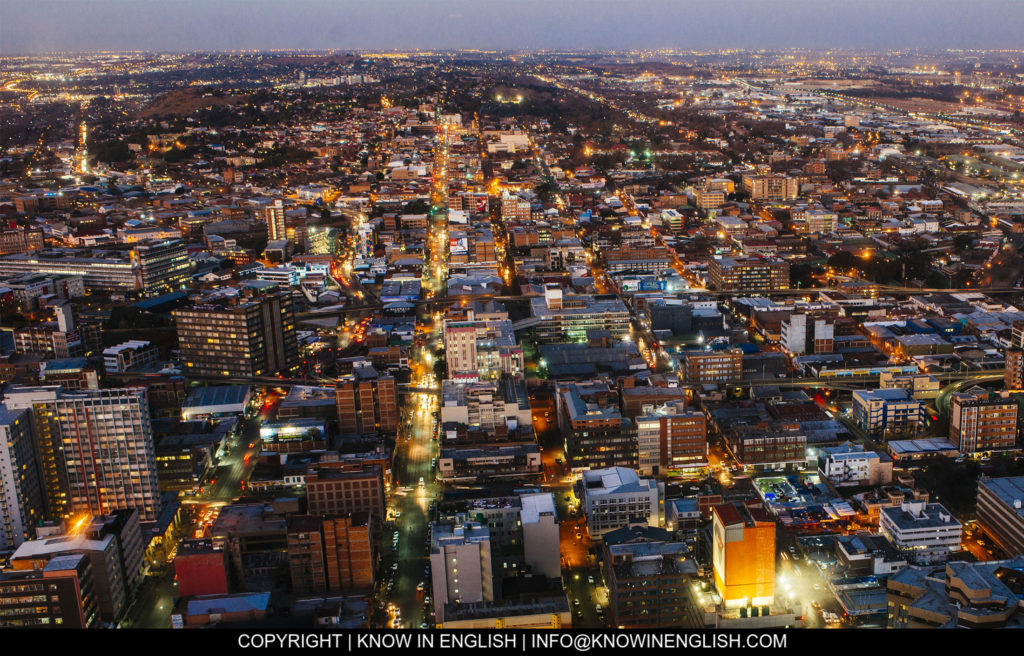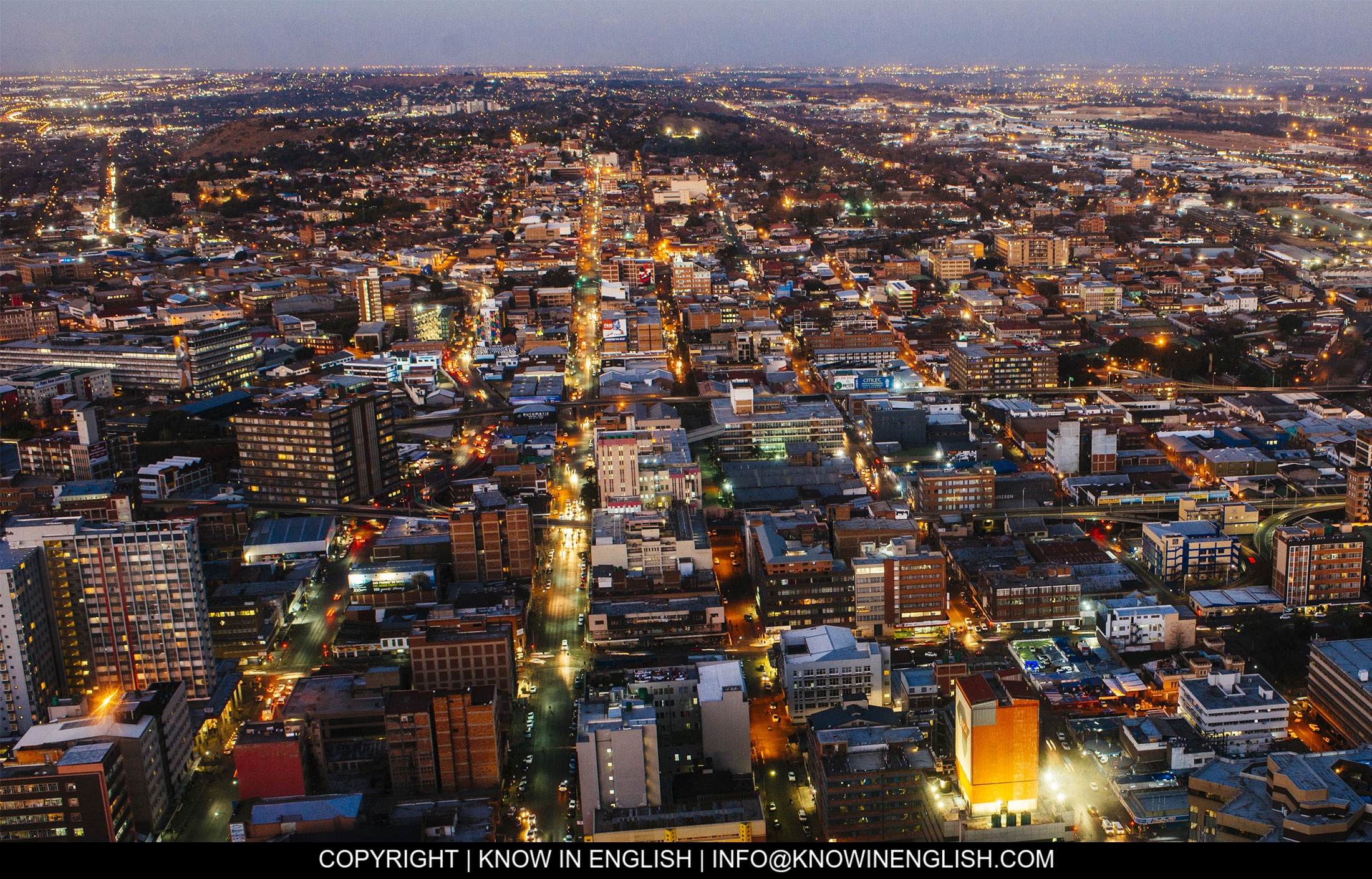G – K – South African Cities South African Cities
South Africa
South Africa Officially the Republic of South Africa is a country located in the far south of the African continent and forms the head of the continent, South Africa shares its land borders with Botswana, Lesotho, Mozambique, Namibia, Zimbabwe, Swaziland, overlooking the Indian Ocean coast from the east, and the Atlantic coast of the West, operates South Africa 1.21909 million km2, thus the State No. 25 on the level of the world in terms of area, South Africa’s three capitals; Pretoria, which is the administrative capital, Cape Town is the legislative capital, and Bloemfontein is Of the judiciary.
Statistics for 2016 showed that the population of South Africa is 54,300,704 people, and the population of the country suffers from a major outbreak of AIDS, which causes low population growth rates, a high number of deaths, lower life expectancy, and the majority of South African residents are black Africans, where they constitute a proportion 80.2% of the population, and there are various other races, including whites, Asians, and other races. The largest percentage of the population embraces Christian Protestant doctrine, at a rate of 36.6% of the population, the other Christians constitute 36% of the population, while the non-religious population constitutes 15.1% of the population, as there are 11 languages in South Africa, one of which is English.
In 1652 AD, Dutch merchants used the region of South Africa as a stopping point for the transport of goods they were transporting between the East and the Netherlands, from which the city of Cape Town was established. In 1806 AD, the British occupied the Cape of Good Hope, which prompted the Dutch to move north, and the establishment of a state there after the expulsion of its indigenous population. Later in the years 1867 AD and 1886 AD diamonds and gold were discovered in the region which prompted the Europeans to exploit the indigenous population as slaves to work in mines, and the British and the people ruled The indigenous peoples of South Africa jointly between the years 1910 -1961 AD under what was called the Union of South Africa, and South Africa turned into a republic in 1961.
Administrative division of regions
South Africa is made up of 9 provinces, each of which includes a number of cities that differ from one province to another, these provinces were formed in 1994. Each county has its own government, which includes its own legislative council, and an executive council entrusted to a cabinet for each province, and the number of members in the legislative council for each province ranges between 30-80 members, depending on the population of each province, and they are elected for a five-year cycle, and members have enacted Legislative Council laws in their regions. The Legislative Council elects the Council of Ministers for a period of five years, and the Council of Ministers appoints the members of the Executive Council which acts as the government at the governorate level and is directly responsible to it by the Legislative Council.
South Africa
The provinces of South Africa differ among themselves in terms of population, area, and climate, and economy. The following table shows these aspects of the provinces of South Africa, based on the statistics of 2011:
| Province | Capital | Population (million people) | Area (km 2 ) | Contribution rate to the national economy (%) | Number of cities |
| Eastern Cape | Bisho | 6.56 | 168,966 | 7.7 | 21 |
| Free State | Bloemfontein | 2.74 | 129,825 | 5.1 | 29 |
| Gauteng | Johannesburg | 12.27 | 16,548 | 33.8 | 10 |
| KwaZulu-Natal | Pietermaritzburg | 10.27 | 94,361 | 16 | 33 |
| Limpopo | Polokwane | 5.4 | 125,755 | 7.3 | 15 |
| Mpumalanga | Nelspruit | 4.04 | 76,495 | 7.6 | 23 |
| Northern Cape | Kimberly | 1.15 | 372,889 | 2 | 20 |
| Northwest | Mafikeng | 3.5 | 106,512 | 6.8 | 11 |
| Western Cape | Cape town | 5.82 | 129,462 | 13.7 | 55 |
South African cities
The 10 largest cities in South Africa, in descending order of population, are:
Johannesburg
Johannesburg is located in the Gauteng Province, with a population of 7,860,781 people, according to statistics in 2011, and a total area of 3,356.92 km 2. The city was founded in 1886 AD.
Cape town
Cape Town is located in the Western Cape Province. With a population of 3,430,992 people, according to statistics in 2011, with an area of total 1,136.79 km 2. The city was founded in 1652 AD.
Durban
Durban is located in KwaZulu – Natal province, with a population of 2,786,046 people, according to statistics in 2011, and a total area of 897.32 km 2. The city was founded in 1880 AD.
Pretoria
Pretoria is located in Gauteng Province. With a population of 1,763,336 people, according to statistics in 2011, and a total area of 1,458.49 km 2. The city was founded in 1855 AD.
Port Elizabeth
Port Elizabeth is located in the Eastern Cape Province. With a population of 876.436 inhabitants, according to 2011 statistics, a total area of 340.78 km2. The city was founded in 1820 AD.
Sushangov
Soshanguve is located in Gauteng Province. With a population of 728.063 inhabitants, according to 2011 statistics, a total area of 338.43 km2.
Evaton
Evaton is located in Gauteng Province. With a population of 605.504 inhabitants, according to 2011 statistics, a total area of 128.5 km2. The city was founded in 1904 AD.
Pietermaritzburg
Pietermaritzburg is located in KwaZulu-Natal. With a population of 475.238 inhabitants, according to 2011 statistics, a total area of 253.9 km 2. The city was founded in 1839 AD.
Bloemfontein
Bloemfontein is located in the Free State District. With a population of 464.591 inhabitants, according to 2011 statistics, a total area of 268.78 km 2. The city was founded in 1846 AD.
Vereeniging
Vereeniging is located in Gauteng Province. The number of population of 377.922 inhabitants, according to 2011 statistics, a total area of 601.88 km 2. The city was founded in 1892.


